
Temple Bar: The Heartbeat of Dublin's Culture and Nightlife
Discover Temple Bar, Dublin's cultural and nightlife epicenter, where cobblestone streets meet lively pubs, art galleries, and a rich historical tapestry.
Temple Bar, situated on the south bank of the River Liffey, is Dublin's most vibrant and bustling neighbourhood. Known for its rich history and lively atmosphere, Temple Bar is the perfect blend of traditional Irish culture and contemporary urban life. The cobblestone streets are lined with an array of pubs, restaurants, and shops, making it a must-visit destination for anyone exploring Dublin. One of the most iconic features of Temple Bar is its legendary nightlife. As the sun sets, the area comes alive with music and laughter spilling out from every corner. Traditional Irish pubs, like The Temple Bar Pub and The Auld Dubliner, offer visitors an authentic experience with live music sessions, hearty food, and a warm, welcoming atmosphere. It’s the ideal place to enjoy a pint of Guinness while listening to folk tunes. Beyond the nightlife, Temple Bar is also a cultural hub. The neighbourhood is home to numerous galleries, including the Irish Photography Centre and the Temple Bar Gallery and Studios. Art enthusiasts will love wandering through these spaces, which showcase both local and international talent. Additionally, the area hosts the Temple Bar Food Market every Saturday, where you can sample local delicacies and fresh produce. Temple Bar is not just about entertainment; it also has a rich historical background. The streets themselves tell a story, with their medieval layout and historic buildings. Don't miss out on visiting the National Photographic Archive and the Project Arts Centre, which offer a deep dive into Ireland's artistic and historical landscape.
Local tips in Temple Bar
- Visit early in the morning to see the neighbourhood without the crowds.
- Keep an eye on your belongings, as the area can get crowded, especially at night.
- Check out the Temple Bar Food Market on Saturdays for local treats.
- Wear comfortable shoes; the cobblestone streets can be tricky to navigate.
- Plan your visit around one of the many festivals held in the area for a unique experience.
Temple Bar: The Heartbeat of Dublin's Culture and Nightlife
Temple Bar, situated on the south bank of the River Liffey, is Dublin's most vibrant and bustling neighbourhood. Known for its rich history and lively atmosphere, Temple Bar is the perfect blend of traditional Irish culture and contemporary urban life. The cobblestone streets are lined with an array of pubs, restaurants, and shops, making it a must-visit destination for anyone exploring Dublin. One of the most iconic features of Temple Bar is its legendary nightlife. As the sun sets, the area comes alive with music and laughter spilling out from every corner. Traditional Irish pubs, like The Temple Bar Pub and The Auld Dubliner, offer visitors an authentic experience with live music sessions, hearty food, and a warm, welcoming atmosphere. It’s the ideal place to enjoy a pint of Guinness while listening to folk tunes. Beyond the nightlife, Temple Bar is also a cultural hub. The neighbourhood is home to numerous galleries, including the Irish Photography Centre and the Temple Bar Gallery and Studios. Art enthusiasts will love wandering through these spaces, which showcase both local and international talent. Additionally, the area hosts the Temple Bar Food Market every Saturday, where you can sample local delicacies and fresh produce. Temple Bar is not just about entertainment; it also has a rich historical background. The streets themselves tell a story, with their medieval layout and historic buildings. Don't miss out on visiting the National Photographic Archive and the Project Arts Centre, which offer a deep dive into Ireland's artistic and historical landscape.
Iconic landmarks you can’t miss
The Temple Bar Pub
Experience the heart of Dublin at The Temple Bar Pub, a lively Irish pub with rich history, delicious food, and unforgettable live music.
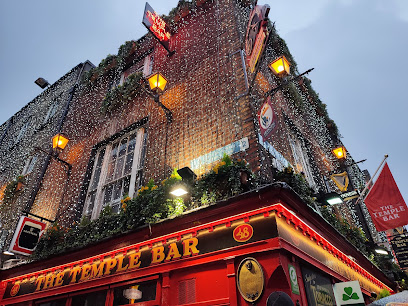
Dublin Castle
Explore Dublin Castle, a historic landmark in the heart of Dublin, steeped in rich heritage and captivating stories from Ireland's past.
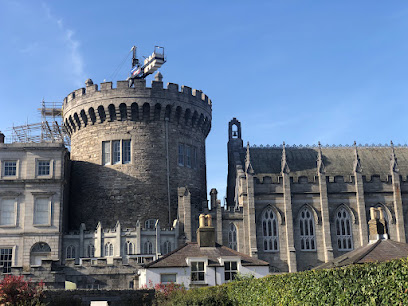
Ha'penny Bridge
Discover the Ha'penny Bridge, a historic pedestrian crossing in Dublin that offers picturesque views and a glimpse into the city's rich heritage.
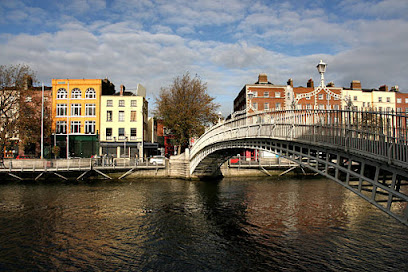
Porterhouse Temple Bar
Discover the vibrant atmosphere of Porterhouse Temple Bar, Dublin's premier pub offering craft beers, delicious food, and live music.
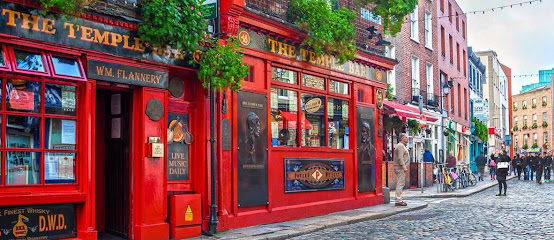
Bad Bobs Temple Bar
Immerse yourself in Dublin's nightlife at Bad Bobs Temple Bar, where live music, delicious cuisine, and vibrant atmosphere come together.
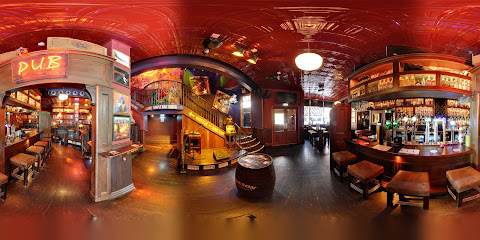
The Old Storehouse Bar and Restaurant
Discover the authentic taste of Ireland at The Old Storehouse, a vibrant pub in Temple Bar, Dublin, celebrated for its hearty dishes and local brews.
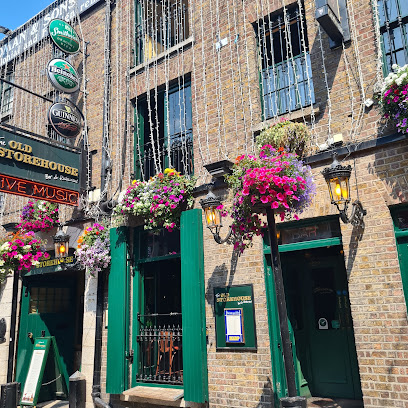
Merchant's Arch
Experience the heart of Dublin at Merchant's Arch, where traditional Irish pub culture meets vibrant live music in the charming Temple Bar area.
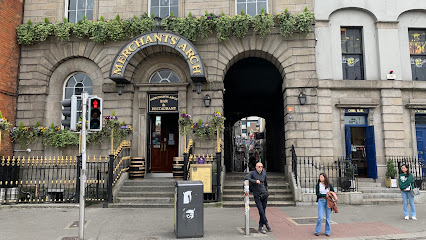
The Irish Rock 'n' Roll Museum Experience
Explore Ireland's rich musical history at The Irish Rock 'n' Roll Museum in Dublin's vibrant Temple Bar, where legends come alive.
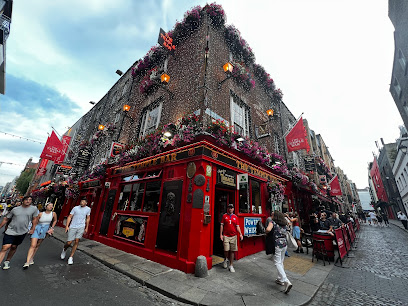
Old Dublin City Wall
Explore the ancient Old Dublin City Wall, a historic landmark revealing the medieval roots of Dublin amidst the vibrant Liberties neighborhood.
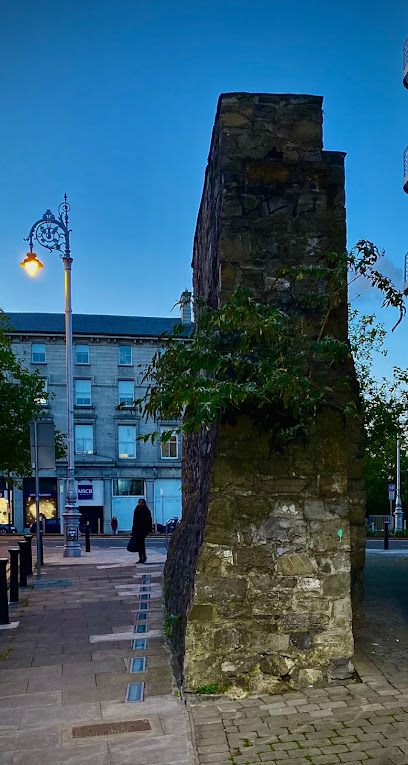
Parliament House
Discover the architectural beauty and historical significance of Parliament House in Dublin's Temple Bar, a must-visit tourist attraction.
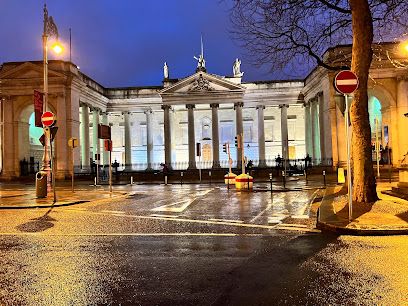
Rory Gallagher Corner
Explore Rory Gallagher Corner in Dublin, a vibrant tribute to the legendary musician, surrounded by the lively atmosphere of Temple Bar.
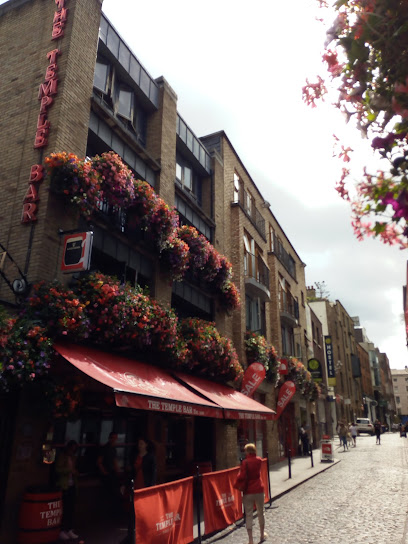
Love Lane in Temple Bar
Explore Love Lane in Temple Bar, Dublin—a vibrant alley filled with stunning street art reflecting the city's rich artistic culture.
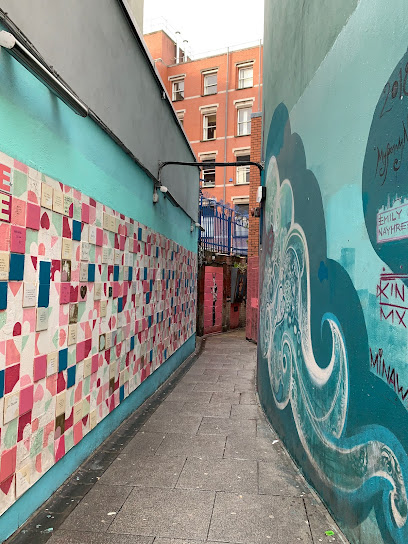
Irish Music Wall of Fame
Explore the Irish Music Wall of Fame in Dublin's Temple Bar, a tribute to the legendary artists that define Irish music and culture.
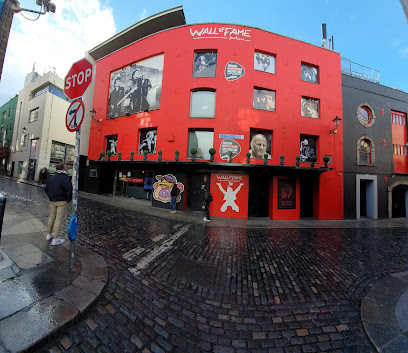
Wall of Love
Discover the enchanting Wall of Love in Dublin's Temple Bar, a vibrant tribute to romance filled with heartfelt messages and artistic expressions.
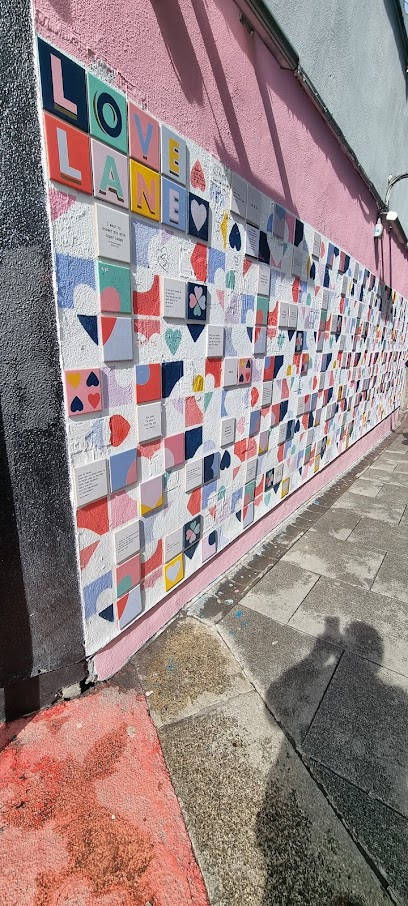
Crampton Court
Crampton Court: A vibrant hub of Dublin culture nestled in Temple Bar, surrounded by art, music, and culinary delights.
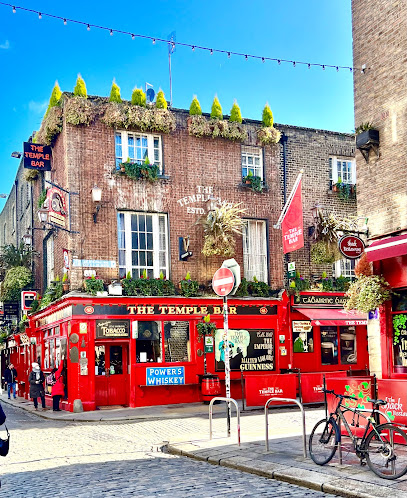
Unmissable attractions to see
The Irish Rock 'n' Roll Museum Experience
Explore the vibrant legacy of Irish rock music at The Irish Rock 'n' Roll Museum in Dublin's iconic Temple Bar.
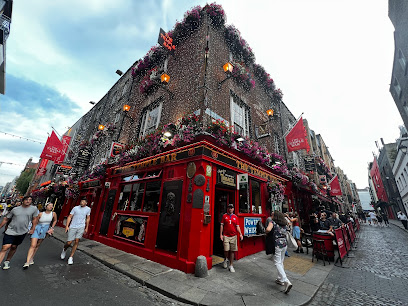
Millennium Bridge
Discover Dublin's Millennium Bridge - a stunning pedestrian crossing that connects the vibrant Temple Bar district with the city's cultural heart.
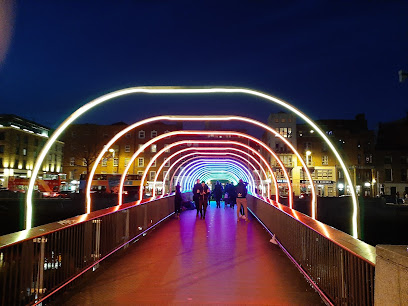
The Ark, Dublin
Discover The Ark in Dublin: a vibrant arts organization offering engaging cultural experiences for families and children in the heart of Temple Bar.
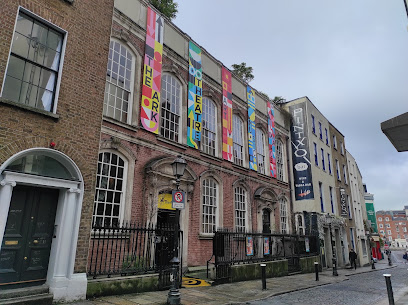
Photo Museum Ireland
Explore the art of photography at Photo Museum Ireland, a cultural hub in Dublin's Temple Bar, showcasing exhibitions, classes, and a unique bookstore.
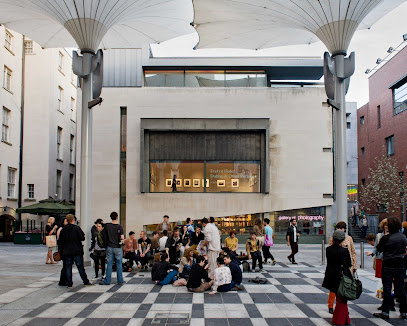
Irish Music Wall of Fame
Explore the Irish Music Wall of Fame in Temple Bar, Dublin—a vibrant tribute to Ireland's legendary musicians and their rich cultural heritage.
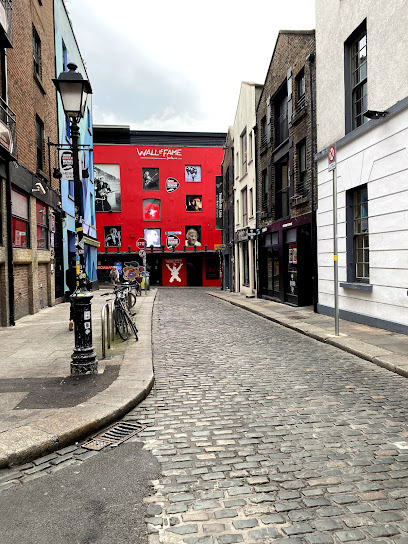
Crampton Court
Experience the vibrant atmosphere of Crampton Court in Temple Bar, Dublin, where history, art, and culture come alive.
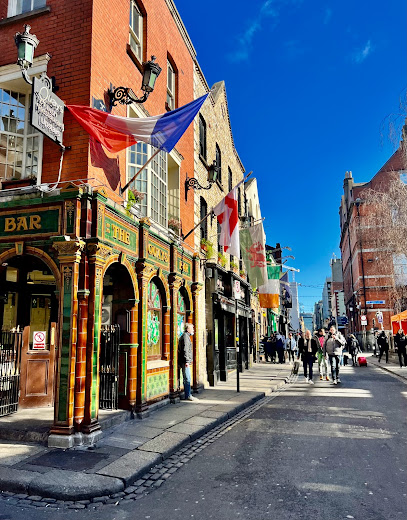
Statue Palm
Explore the Statue Palm in Temple Bar, Dublin – a stunning symbol of artistic expression and a vibrant cultural hub in the heart of the city.
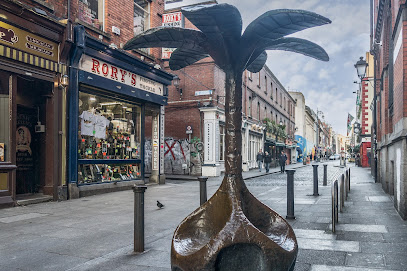
Murales Fresh
Explore the captivating Murales Fresh in Temple Bar, Dublin, featuring stunning murals that celebrate the city's rich artistic culture and vibrant spirit.
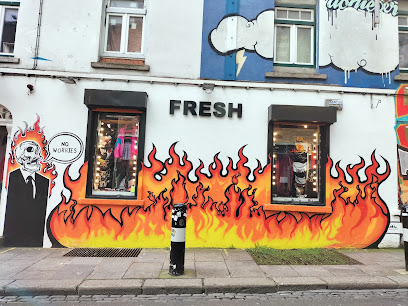
Essential places to dine
Porterhouse Temple Bar
Discover Dublin's craft beer scene at Porterhouse Temple Bar – where delicious food meets live music in an unforgettable atmosphere.
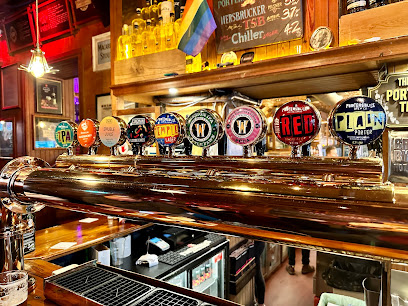
The Old Storehouse Bar and Restaurant
Immerse yourself in authentic Irish culture at The Old Storehouse Bar and Restaurant in Temple Bar - where great food meets lively entertainment.
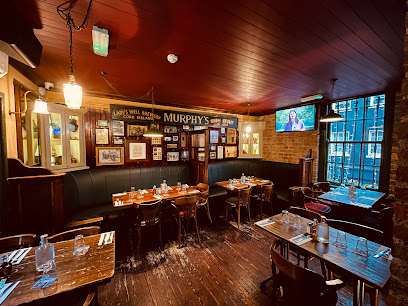
Old Mill Restaurant
Discover authentic Irish flavors at Old Mill Restaurant in Temple Bar—where tradition meets taste in a cozy atmosphere.
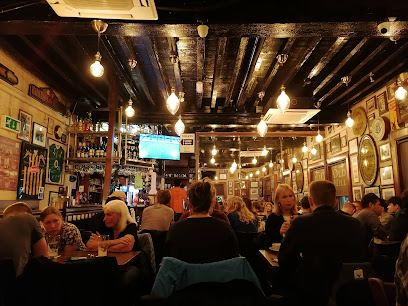
Gallaghers Boxty House
Experience authentic Irish cuisine at Gallaghers Boxty House in Dublin's Temple Bar – where tradition meets flavor.

Elephant & Castle
Experience Dublin's culinary delights at Elephant & Castle in Temple Bar—famous for its delicious wings and vibrant atmosphere.
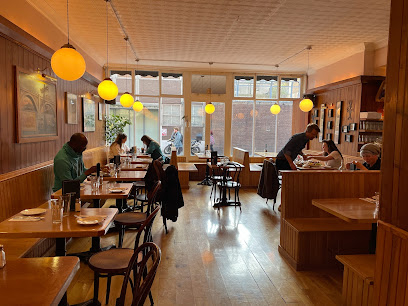
The Shack Restaurant
Discover the flavors of Ireland at The Shack Restaurant in Temple Bar—where traditional meets modern in every delicious bite.
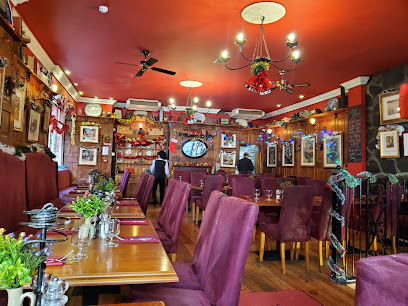
Il Vicoletto
Experience authentic Italian cuisine at Il Vicoletto in Dublin's lively Temple Bar district.
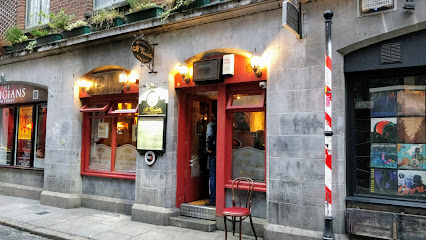
Pinocchio Italian Restaurant - Temple Bar
Experience the heart of Italy at Pinocchio Italian Restaurant in Dublin's vibrant Temple Bar district with delicious dishes and warm hospitality.
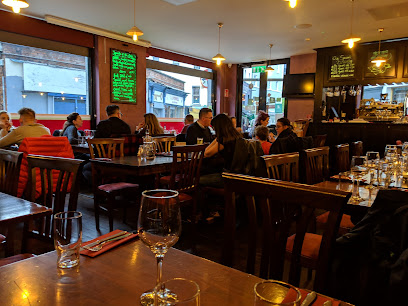
La Caverna Restaurant and Wine Bar
Discover La Caverna Restaurant and Wine Bar: A premier Italian dining experience with Mediterranean flair in Dublin's lively Temple Bar.
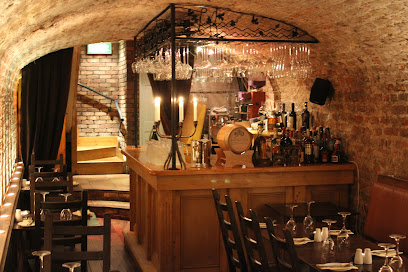
Zampas Bar & Restaurant
Discover authentic Irish cuisine at Zampas Bar & Restaurant in Dublin's vibrant Temple Bar area – where tradition meets modern dining.

Markets, malls and hidden boutiques
The Temple Bar Trading Company
Explore The Temple Bar Trading Company for the best in Irish gifts, souvenirs, and unique jewelry in Dublin's cultural heart.
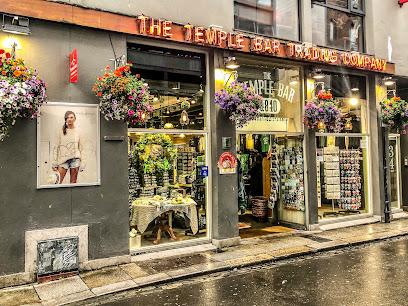
The Irish Store
Explore The Irish Store for exquisite gifts and authentic Irish goods in the heart of Dublin's Temple Bar area.
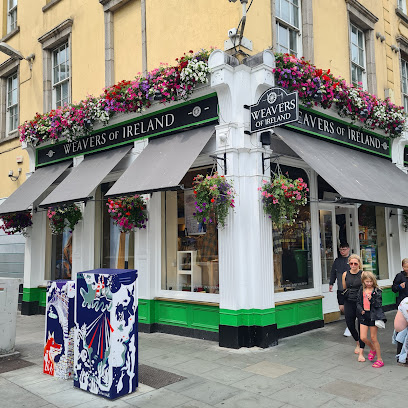
Rebirth of Cool
Explore unique fashion at Rebirth of Cool in Dublin's Temple Bar, where style meets individuality in a vibrant shopping experience.
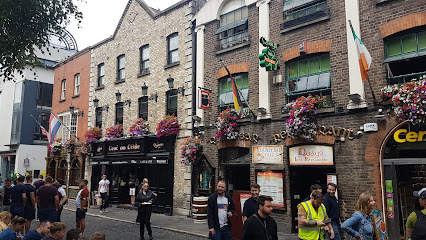
dublin vintage factory
Explore Dublin's vibrant fashion scene at the Dublin Vintage Factory, a vintage clothing store offering unique styles and classic pieces.
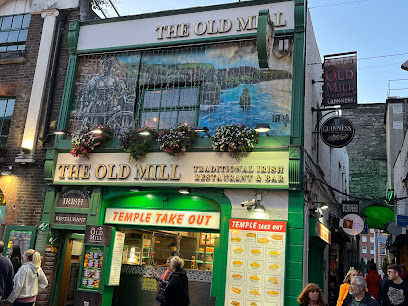
Tamp & Stitch
Discover unique gifts, stylish clothing, and a cozy coffee nook at Tamp & Stitch, the heart of Dublin's vibrant shopping scene.
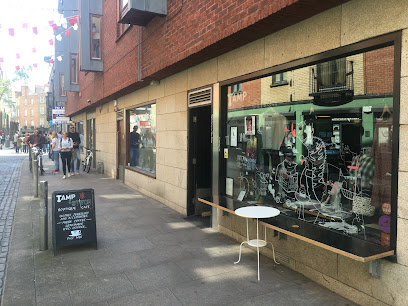
Durt Co
Unearth unique vintage treasures at Durt Co, a must-visit vintage clothing store in the heart of Dublin's Temple Bar district.
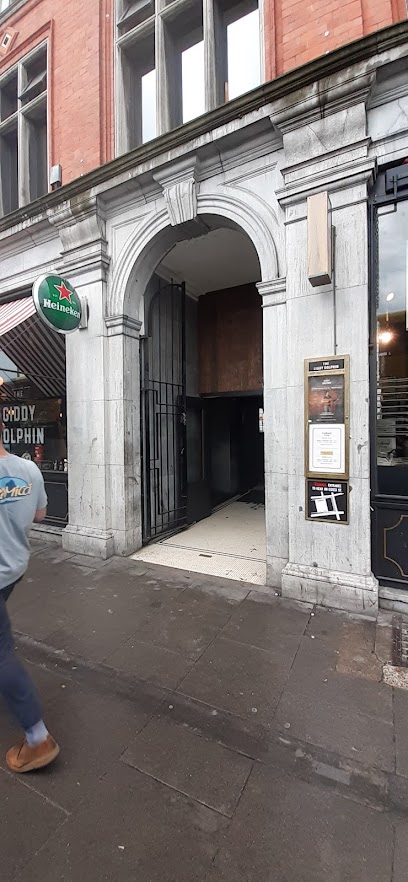
Magne
Explore the heart of Dublin at Magne Gift Shop, where unique gifts and local crafts await in the vibrant Temple Bar.
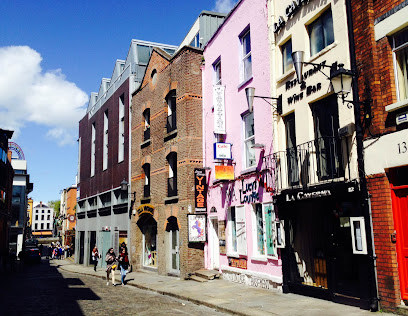
The Big Smoke Vintage
Discover unique vintage clothing and accessories at The Big Smoke Vintage in Dublin's Temple Bar, a must-visit for fashion lovers and tourists.
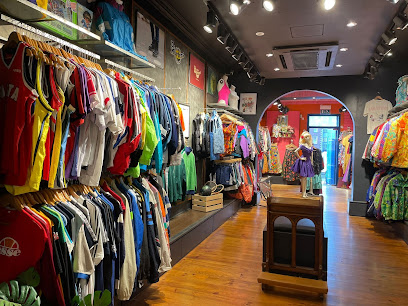
Golly Gosh Vintage Boutique Dublin
Explore Golly Gosh Vintage Boutique in Dublin's Temple Bar for unique vintage clothing and accessories that celebrate sustainable fashion.
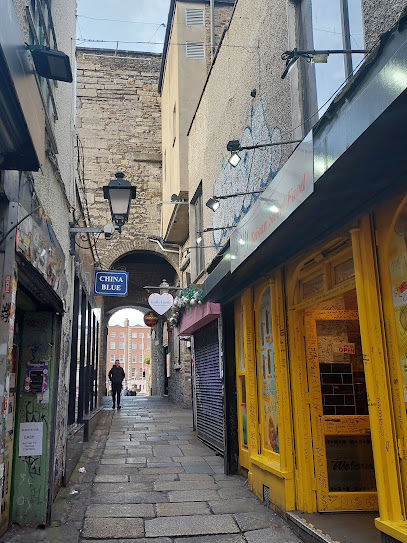
The House of Names
Explore your roots at The House of Names, Dublin's unique gift shop specializing in personalized family crests and heritage treasures.
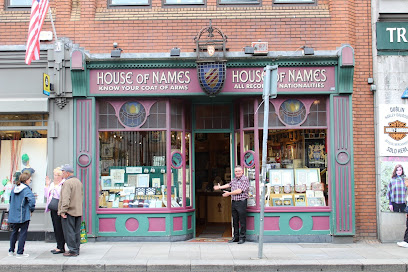
Essential bars & hidden hideouts
The Temple Bar Pub
Discover The Temple Bar Pub, Dublin's iconic Irish pub, where history meets vibrant nightlife and authentic local brews await.
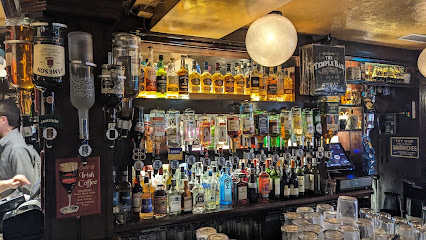
Porterhouse Temple Bar
Experience Dublin's vibrant nightlife at Porterhouse Temple Bar, a top-rated gastropub with craft beers, delicious food, and live music in the heart of Temple Bar.
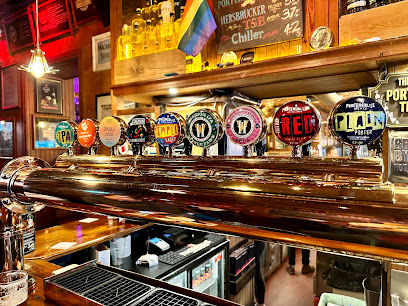
Bad Bobs Temple Bar
Discover Bad Bobs Temple Bar, where live music, vibrant atmosphere, and delicious food create an unforgettable Dublin experience.
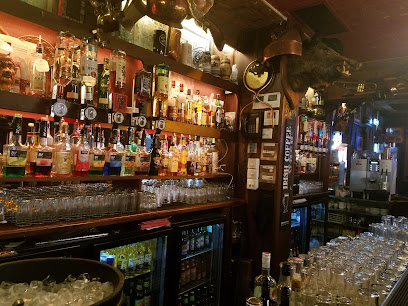
The Old Storehouse Bar and Restaurant
Experience the heart of Dublin at The Old Storehouse, where traditional Irish cuisine meets live music in a vibrant pub atmosphere.
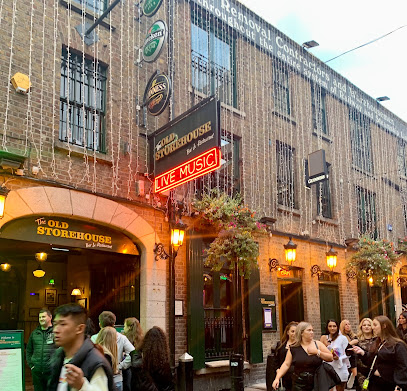
Merchant's Arch
Discover the heart of Dublin at Merchant's Arch, an iconic Irish pub offering live music, traditional cuisine, and a lively atmosphere.
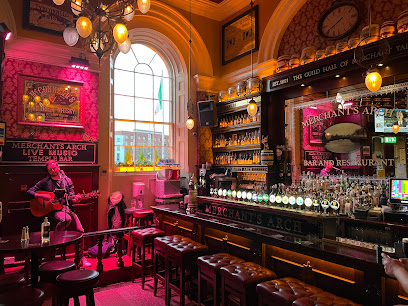
The Palace Bar
Discover The Palace Bar in Dublin's Temple Bar—an iconic Irish pub with rich history, vibrant atmosphere, and traditional brews.
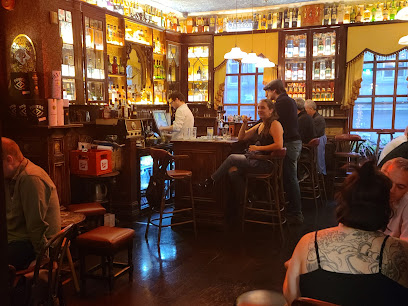
The Auld Dubliner
Discover the authentic Irish pub experience at The Auld Dubliner in Dublin's vibrant Temple Bar district, where live music and warm hospitality await.
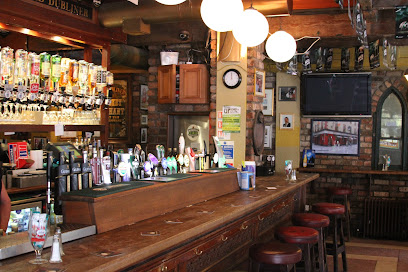
The Ha'penny Bridge Inn
Experience the vibrant nightlife of Dublin at The Ha'penny Bridge Inn - a lively bar and comedy club in the heart of Temple Bar.
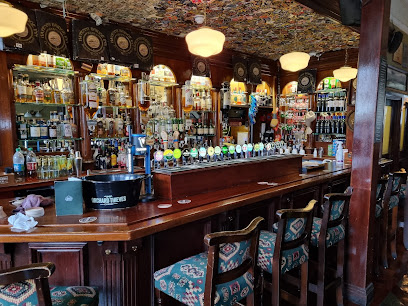
Vintage Cocktail Club
Discover the Vintage Cocktail Club in Dublin's Temple Bar, where exquisite cocktails and vintage charm create an unforgettable nightlife experience.
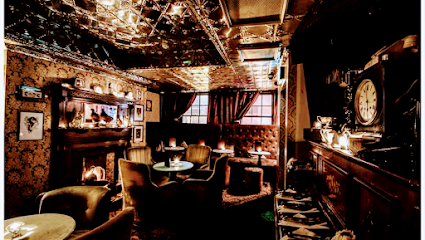
r.i.o.t.
Experience the pulse of Dublin's nightlife at r.i.o.t., where innovative cocktails and vibrant atmosphere await in Temple Bar.
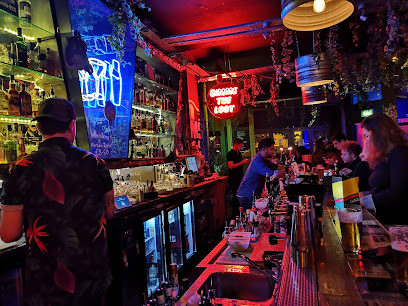
Local Phrases
-
- HelloDia dhuit
[dee-ah gwit] - GoodbyeSlán
[slawn] - YesTá
[taw] - NoNíl
[neel] - Please/You're welcomeLe do thoil
[leh duh hull] - Thank youGo raibh maith agat
[guh rev mah agut] - Excuse me/SorryGabh mo leithscéal
[gav muh lesh-kale] - How are you?Conas atá tú?
[kun-us ah-taw too] - Fine. And you?Tá mé go maith. Agus tú?
[taw may goh mah. ah-gus too] - Do you speak English?An bhfuil Béarla agat?
[ahn wil bair-la ah-gut] - I don't understandNí thuigim
[neel hug-im]
- HelloDia dhuit
-
- I'd like to see the menu, pleaseBa mhaith liom an cóisir a fheiceáil, le do thoil
[bah wah lyum on koh-shir ah eck-ah-leh, leh duh hull] - I don't eat meatNí ithim feoil
[neel ih-him foh-il] - Cheers!Sláinte!
[slawn-cheh] - I would like to pay, pleaseBa mhaith liom íoc, le do thoil
[bah wah lyum eek, leh duh hull]
- I'd like to see the menu, pleaseBa mhaith liom an cóisir a fheiceáil, le do thoil
-
- Help!Cabhraigh!
[ka-ra] - Go away!Imigh uaim!
[ih-mee oom] - Call the Police!Glan an Gharda!
[glan ahn garda] - Call a doctor!Glan dochtúir!
[glan dohg-too-ir] - I'm lostTá mé caillte
[taw may kahl-chuh] - I'm illTá mé tinn
[taw may chin]
- Help!Cabhraigh!
-
- I'd like to buy...Ba mhaith liom ceannach...
[bah wah lyum can-ukh] - I'm just lookingNíl mé ach ag féachaint
[neel may okh eg fay-eh-khint] - How much is it?Cé mhéad atá air?
[kay vayd ah-taw er] - That's too expensiveTá sé ró-dhaor
[taw shay row-gheer] - Can you lower the price?An féidir leat an praghas a laghdú?
[ahn fay-dur lat on pray-us ah lay-goo]
- I'd like to buy...Ba mhaith liom ceannach...
-
- What time is it?Cén t-am é?
[kayn t-ahm eh] - It's one o'clockTá sé a haon
[taw shay ah hayn] - Half past (10)Leathuair tar éis (10)
[lah-hoor tar aysh (10)] - MorningMaidin
[mah-din] - AfternoonTráthnóna
[traw-noh-nuh] - EveningTráthnóna
[traw-noh-nuh] - YesterdayInné
[in-ay] - TodayInniu
[in-yoo] - TomorrowAmárach
[ah-maw-rahk] - 1A haon
[ah hayn] - 2Dó
[doh] - 3Trí
[tree] - 4Ceathair
[cah-her] - 5Cúig
[coo-ig] - 6Sé
[shay] - 7Seacht
[shahkht] - 8Ocht
[ukht] - 9Naoi
[nee] - 10Deich
[deh]
- What time is it?Cén t-am é?
-
- Where's a/the...?Cá bhfuil a/an...?
[kaw wil ah/an] - What's the address?Cén seoladh atá air?
[kayn shoh-lah ah-taw er] - Can you show me (on the map)?An féidir leat mé a thaispeáint (ar an léarscáil)?
[ahn fay-dur lat may ah hass-paint (ar on lay-ers-kawl)] - When's the next (bus)?Cathain atá an chéad (bus)?
[kah-hin ah-taw on khayd (bus)] - A ticket (to ....)Ticéad (go dtí ....)
[tick-ade (guh dee ....)]
- Where's a/the...?Cá bhfuil a/an...?
History of Temple Bar
-
Temple Bar's history can be traced back to the Viking settlement of Dublin in the 9th century. The area was originally a marshland before it became a bustling part of the medieval city. Its name is believed to derive from the Temple family, who settled in the area in the 17th century, when it began to develop as a cultural and commercial hub.
-
During the 17th and 18th centuries, Temple Bar evolved into a vibrant cultural district. The establishment of taverns, theatres, and shops attracted artists and intellectuals. The area became known for its bohemian atmosphere, fostering a sense of community among writers and performers, which laid the groundwork for its modern reputation as Dublin's cultural quarter.
-
Post-World War II, Temple Bar suffered from urban decay and neglect. Many historic buildings fell into disrepair, and the area became less desirable. However, in the 1980s, a concerted effort by the Dublin Corporation led to its revitalization. This included the preservation of historic buildings and the development of cultural institutions, transforming Temple Bar into a bustling area once again.
-
Today, Temple Bar is home to numerous cultural institutions, including the Irish Film Institute and the Gallery of Photography. The area hosts various festivals, such as the Temple Bar TradFest, which celebrates traditional Irish music and arts. These events highlight the neighbourhood's rich cultural heritage and its ongoing significance in Dublin's artistic landscape.
-
In recent years, Temple Bar has become synonymous with Dublin's nightlife and tourism. Its cobbled streets are lined with pubs, restaurants, and shops, attracting visitors from around the world. Despite its commercial success, efforts continue to maintain the area's historical character and cultural vibrancy, ensuring that Temple Bar remains a key part of Dublin's identity.
Temple Bar Essentials
-
Temple Bar is centrally located in Dublin, making it easily accessible from various neighborhoods. The area is well-served by public transport, with the Luas tram system (Red Line) stopping at the nearby Jervis and Abbey Street stations. Buses from various parts of Dublin also stop at nearby bus stops, such as Fleet Street and Westmoreland Street. If arriving from Dublin Airport, you can take the Airlink Express bus (Route 747 or 757) to O'Connell Street and then walk or transfer to local buses or the Luas tram.
-
Temple Bar is a compact neighborhood best explored on foot. Many of its attractions, pubs, and restaurants are within walking distance. For longer distances, Dublin offers a comprehensive public transport system, including buses and the Luas tram. Dublin Bikes, a bike-sharing service, is also available, with docking stations throughout the area, providing an eco-friendly way to explore the city.
-
Temple Bar is generally safe for tourists, but standard precautions are advisable. Be cautious of pickpockets, especially in crowded areas. Avoid poorly lit streets at night, particularly around the edges of the neighborhood. While most of Temple Bar is safe, areas like parts of O'Connell Street and some side streets can experience higher crime rates, so it's best to remain vigilant.
-
In case of emergency, dial 112 for immediate assistance. Local police stations and medical facilities are available in and around Temple Bar. It’s advisable to have travel insurance that covers emergencies. For minor health issues, you can find pharmacies around Temple Bar that offer over-the-counter medications.
-
Fashion: Do wear comfortable shoes for walking. Casual attire is acceptable, but avoid overly revealing clothing when visiting religious sites. Religion: Do respect local customs, particularly in churches. Cover your shoulders and knees when entering places of worship. Public Transport: Do be polite and offer your seat to the elderly. Don’t eat or drink on public transport. Greetings: Do greet locals with a friendly smile or nod. A handshake is also common. Eating & Drinking: Do try local dishes and pubs. Don’t be overly loud or disruptive in restaurant settings.
-
To experience Temple Bar like a local, visit the area during the day for the bustling market at Meeting House Square on Saturdays. Engage with local artists and musicians who often perform in the streets. Try to visit the smaller pubs, which may offer a more authentic atmosphere than the larger tourist spots. Additionally, check out the local art galleries and independent shops for unique souvenirs.
Trending Landmarks in Temple Bar
-
The Temple Bar Pub
-
Dublin Castle
-
Ha'penny Bridge
-
Porterhouse Temple Bar
-
Bad Bobs Temple Bar
-
The Old Storehouse Bar and Restaurant
-
Merchant's Arch
-
The Irish Rock 'n' Roll Museum Experience
-
Old Dublin City Wall
-
Parliament House
-
Rory Gallagher Corner
-
Love Lane in Temple Bar
-
Irish Music Wall of Fame
-
Wall of Love
-
Crampton Court
Nearby Cities to Temple Bar
-
Things To Do in Bray
-
Things To Do in Drogheda
-
Things To Do in Kilkenny
-
Things To Do in Athlone
-
Things To Do in Wexford
-
Things To Do in Port Erin
-
Things To Do in Port St Mary
-
Things To Do in Castletown
-
Things To Do in Waterford
-
Things To Do in Ballasalla
-
Things To Do in Belfast
-
Things To Do in Peel
-
Things To Do in Douglas
-
Things To Do in Onchan
-
Things To Do in Kirk Michael













